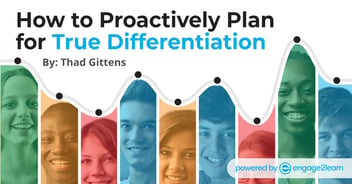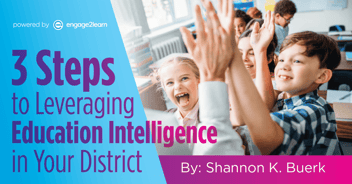You Can’t Do Everything. Here’s How to Decide What to STOP Doing Now
“Overwhelming” seems to be the adjective educators use most often to describe the last few school years. The shifts in public education have been drastic, and many educators are working long, grueling hours just to keep afloat.
At its best, the pandemic forced us all – parents, teachers, administrators, and students alike – to make some much-needed changes. But change is HARD, and it is critical to use a systems thinking approach when analyzing instructional classroom practices and school culture. Such an approach will help maximize teacher retention, increase student engagement, and decrease teacher burnout. It is unrealistic to expect educators to use the methods and practices of the past in taking on this fast-changing world of teaching and learning. While school and district leaders are doing the important work of strategic planning throughout the school year, we began to wonder if those plans ever include what could and should be strategically abandoned.
engage2learn (e2L) Founder and CEO Shannon K. Buerk writes in her white paper, Strategic Vision Methodology, “Engaging in the technique of strategic abandonment provides the structure for ongoing updates and creates the space for change, iteration, and implementation.”
We follow through with this practice both within our own company and when we collaborate with our partners in developing a strategic plan and learning innovation framework. We are constantly asking these questions: What is working well? What changes do we need to make to keep up with the current system? What isn’t working that we can abandon and take off of everyone’s plates?
The stop-start-continue method challenges us to think about what isn’t effective, what needs to be started, and what should be continued by collecting and analyzing feedback.
Step 1: Solicit Feedback
Requesting feedback from all school community members and stakeholders creates an open, comfortable environment where everyone feels valued and safe to share. Consider the purpose of this process and whether it would be beneficial to invite students to give feedback. Allowing students to participate in the process diversifies the perspective and enables leaders to examine the issues with multiple lenses. This feedback also allows you to find commonalities between the things that are and are not working, opening the discussion to possible solutions that hadn’t been previously thought of. Feedback could be collected through a survey or in a collaborative staff or teacher development meeting. You can also use a resource like the one linked below.
Step 2: Analyze Feedback
Now that faculty, staff members, and even students have had time to share feedback, exploring the education analytics is the next step. Looking for patterns, trends, and commonalities within the data is essential. Utilizing user-friendly tools like Padlet, Google Forms, Jam board, or digital word generators such as Word Clouds are efficient tools for collecting anonymous feedback and quickly identifying trends.
Consider appropriate implementation plans in response to the feedback. If there are any quick wins that can be accomplished, prioritize those first. Doing so will validate everyone’s opinions and prove the process’s value. Communicate results and next steps to everyone involved.
Here are a few examples of what the start-stop-continue method can look like for a classroom teacher and at the school level:
Stop, Start, Continue Method - Example 1
Stop, Start Continue Method - Example 2

Step 3: Activate Your Plan
After feedback has been analyzed, prioritized, and communicated, it’s time to put a plan into motion. There are various methodologies for setting goals and following through with them. At e2L, we practice the eGrowe model to ensure goals are met. This model can also be used when identifying what things should be abandoned and what should begin as an organization.
Here’s a quick exercise that you can use to determine if your district or school’s next steps are actionable:
- GOAL:
- What is the goal?
- Who does it affect?
- What is the purpose?
- REALITY:
- How close are we to reaching our goal?
- What are we currently doing that aligns with the goal?
- OPTIONS:
- How will this be implemented?
- Who will be involved?
- When will this be implemented?
- WILL:
- Is everyone involved committed to the plan?
- EVIDENCE:
- How will we measure success?
Start Stopping Now
The stop-start-continue method is an effective way to reflect on current practices and open a space to think outside the box. An instructional specialist that I coached this year was sharing how heavy her load felt and that she never felt “good” at anything because she was spread so thin. Not only was she responsible for everything she had been responsible for in the past, but now she was managing virtual learning for her school and was the family liaison for virtual learning, too.
She was working around the clock, but never felt like she could get anything done. She set a goal to complete a stop-start-continue, found three things that she was able to abandon because they were either ineffective or irrelevant, and discovered one new idea that helped her simplify her work.
Increasing the use of tools and analytics for education systems can help illuminate areas and tasks where staff and teachers spend too much time and receive too little benefit. Once known, the leaders within the district can begin to identify areas or tasks to eliminate or replace them with better, more efficient methods.
The time regained could be used for more productive endeavors, such as community engagement, exploring better options for professional development for teachers, launching or expanding instructional coaching, or the development of a school strategic plan.
Now more than ever, it’s time to look at what’s working and what we need to leave behind. What’s going well in your school or classroom? What changes could be made to yield a high return on investment? Let’s not be afraid to make some impactful changes.
“Every success story is a tale of constant adaptation, revision, and change.“
Richard Branson |



